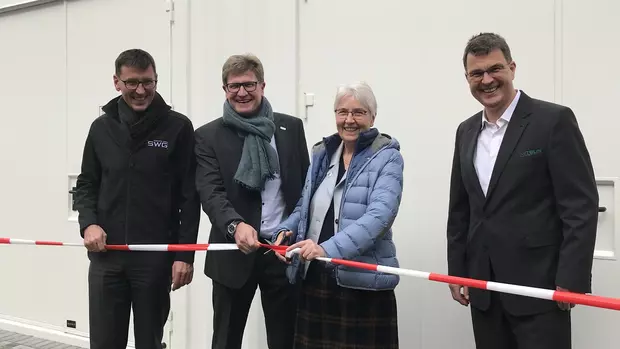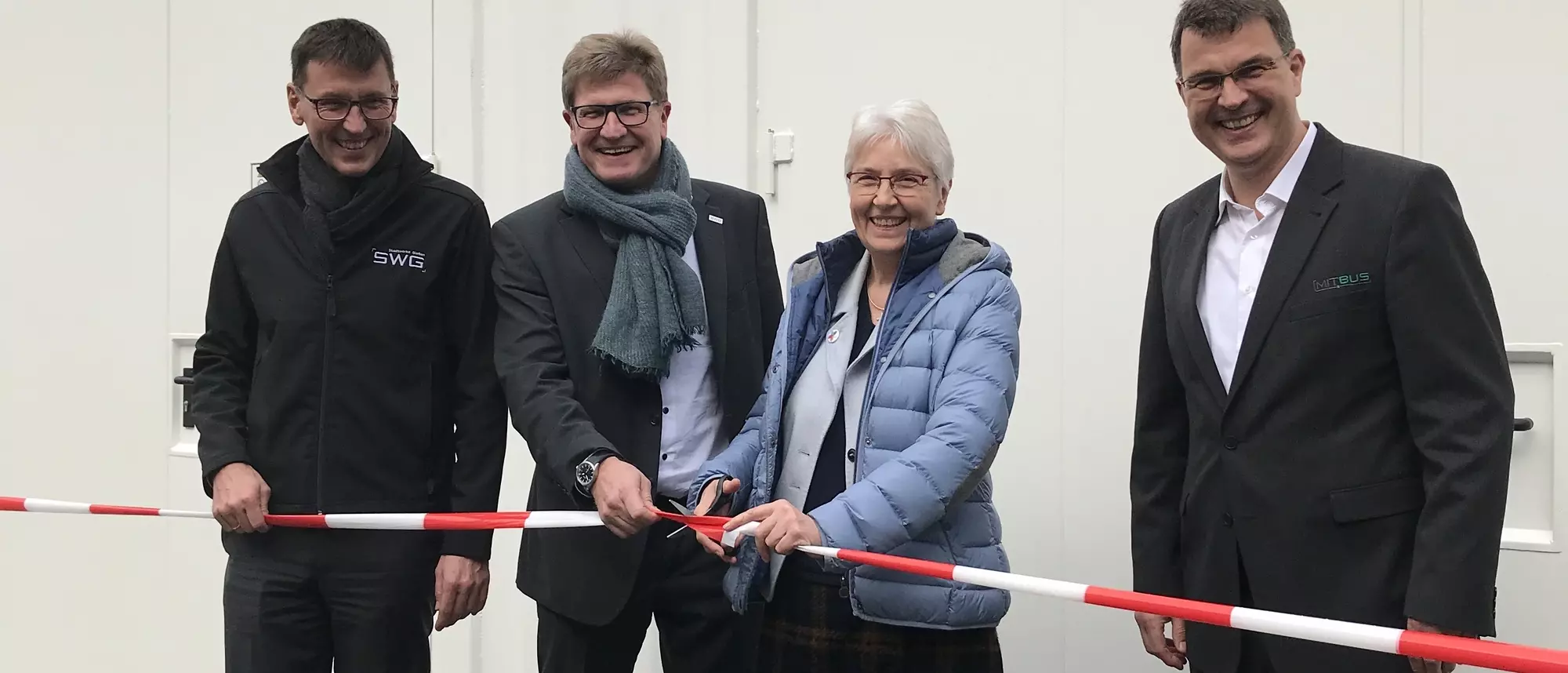
To ensure that the MIT.BUS fleet can always be safely refuelled with environmentally friendly fuel, Stadtwerke Gießen has expanded its natural gas filling station on the company premises in Lahnstraße.
Natural gas as a fuel - this has been a reality in Giessen since 2006. At that time, MIT.BUS, the local transport subsidiary of Stadtwerke Gießen (SWG), began purchasing natural gas buses and thus started to phase out diesel. "We have now been running almost CO2-neutrally on bio natural gas for almost a year," says Jens Schmidt, Commercial Director of SWG, on the occasion of the official commissioning of the extended natural gas filling station on the company premises in Lahnstraße. In fact, since March 2019, all 54 vehicles used by MIT.BUS have had the alternative drive system. "Compared to conventional diesel vehicles, the MIT.BUS fleet alone saves around 55,000 tonnes of CO2 per year," explains Matthias Funk, Chief Technical Officer at SWG. City Councillor Gerda Weigel-Greilich adds:
"The city appreciates this commitment by SWG and MIT.BUS." The fact is: Only a few German cities can boast practically CO2-neutral local public transport. And it is precisely here that the natural gas drive plays a central role. This is because bio natural gas as a fuel is currently the only CO2-neutral alternative in the commercial vehicle sector that enables practical ranges.
SWG is taking the next logical step with the expansion of its own filling station, which doubles the refuelling capacity. This ensures two things: a reduction in refuelling times from around ten to around six minutes and - more importantly - redundancy in the event of an emergency. Even if one of the now two systems fails completely, the other is sufficient to keep the bus running. "This safety was an important concern for us," explains Matthias Funk.
From storage to the tank
In order to get usable quantities of natural gas or bio natural gas into a tank, the gaseous fuel has to be compressed. This is why every natural gas filling station has a compressor unit that presses the natural gas into storage cylinders under high pressure. From here, the gas is then fed into the vehicle tanks via the petrol tap. For a bus, this is an average of 160 kilograms per filling. This quantity is sufficient to cover between 350 and 380 kilometres - depending on the route profile and the vehicle's load.
The limiting factor for the performance of a natural gas filling station is therefore the compressor unit. This is precisely where the expansion comes in. "The existing storage bank still fulfils our requirements. That's why we only had to add a second compressor unit," summarises Mathias Carl, Managing Director of MIT.BUS.
The design of the new unit differs from the existing one: Its compression pistons are not arranged in a V-shape, but in a star shape. "This has a positive effect on smooth running and minimises performance gaps," says Matthias Funk. "Once again, we have opted for a solution that is both efficient and robust."
Ready as early as December
Due to its complexity, which should not be underestimated, the construction of such a tank system takes time: work began in May 2019. After TÜV approval on 10 December 2019, the system went into trial operation.
In total, SWG invested around 900,000 euros in the expansion of the tank system. However, it is not only MIT.BUS that benefits from this, but also the parent company, SWG itself. "We have over 100 cars and commercial vehicles with natural gas drives in use at the municipal utility company," explains Jens Schmidt. Last but not least, private natural gas drivers and operators of natural gas-powered commercial vehicles can refuel with CO2-neutral bio natural gas in Lahnstrasse and make a decisive contribution to the transport transition today.

